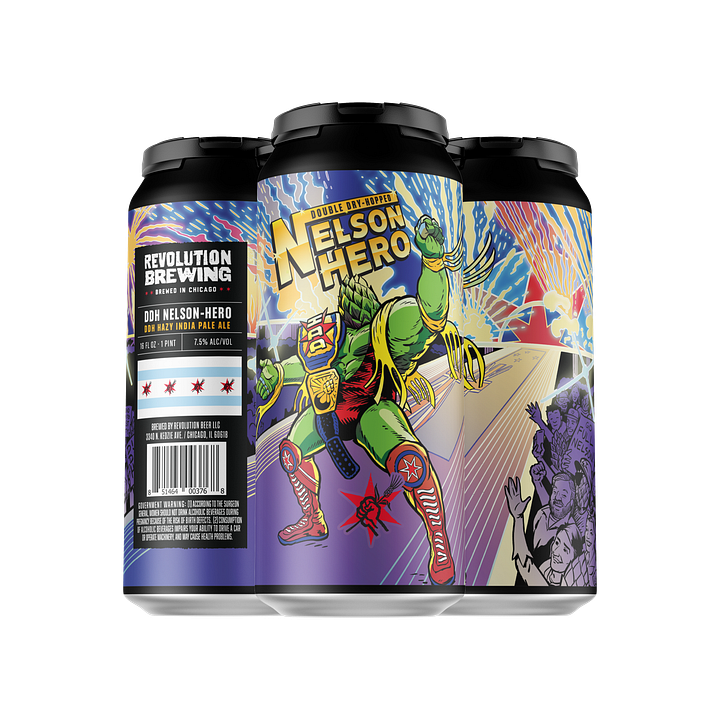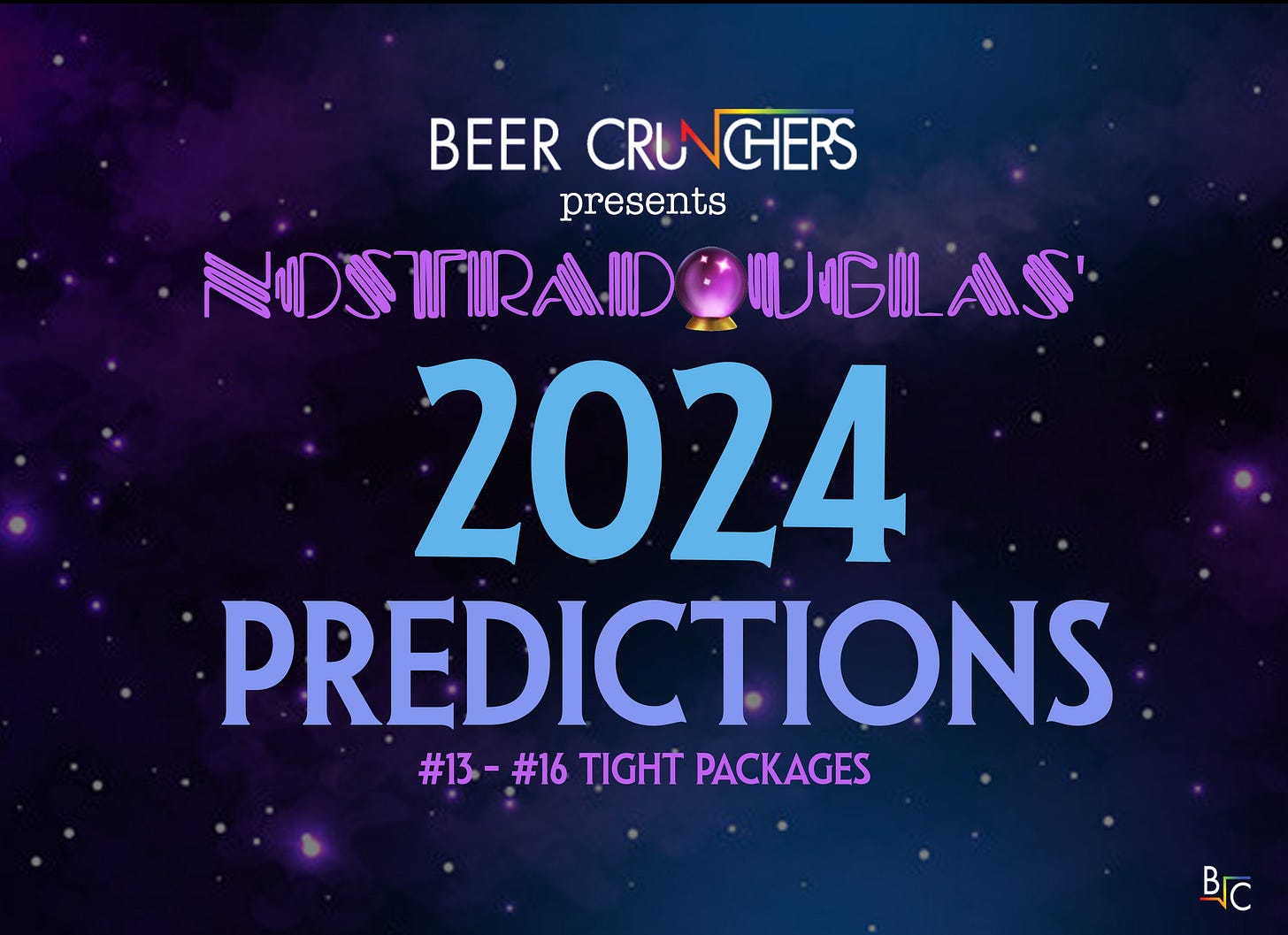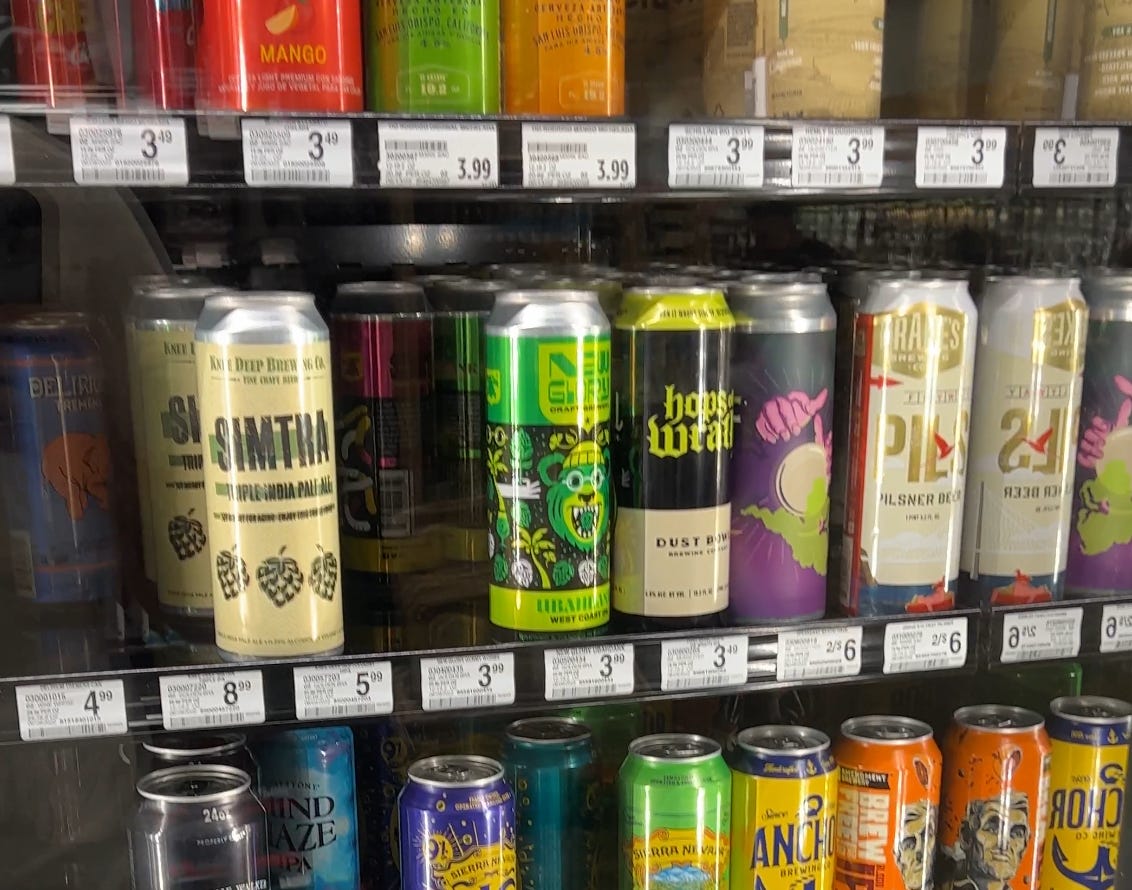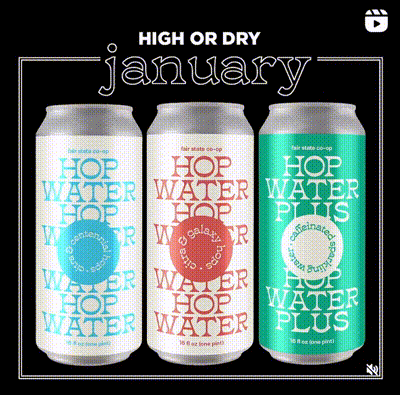Over the last decade, packaging trends have played a pivotal role in consumer excitement over craft beer. Brands like Oskar Blues and Heady Topper changed the way beer enthusiasts looked at cans, versus bottles. The 22oz bomber bottle went from a dominant format for small one-off releases to nearly extinct as the 4-pack of tallboys stomped in their tracks. The adhesive label on cans went from being considered janky and unprofessional to practical and in fashion. Big regional brewers got aggressive by introducing the 15-pack (and 18-pack 😬 ) while small local breweries tinkered with use cases for the 8oz can. Join Nostradouglas as he gazes into his crystal ball and shares what packaging trends will drive conversations in 2024.
With craft beer’s short term growth in question now, one has to be conscious of the investment that some types of new packaging can involve. For example, asking your favorite can brewery to start doing bottles may also be asking them to drop 6 or even 7-figures on a bottling line. Not necessarily the best time making that type of move, but to the aggressor come the spoils. Instead, Nostradouglas is focused around four packaging trends that shouldn’t involve a major capital investments for most existing ooperations.
#13 - The Small, but Mighty 12oz Can
Craft breweries can be split into two separate categories: 1) Those who focus on the price-friendly, higher volume 6-pack-12oz can, and 2) Those who prioritize the lower volume, better margin 4-pack, 16oz can. Breweries would love to have both sizes as selling options, especially for their best sellers. The six-pack attracts the wider audience in stores, while in addition to many enthusiasts, the 16oz is preferred by the on-premise (bars, venues, stadiums, etc.) locations when a draft handle isn’t in the cards. Selling enough volume in each to keep both sizes fresh in the market can be a challenge and is why it’s best to only venture into multiple sizes with the most well-known brands and/or highest selling priorities.
Nostradouglas planned to predict more 16oz-heavy breweries converting to, or adding 12oz 6-packs in 2024, but his neighbors up the street at Half Acre beat him to it. In late January, they announced that Daisy Cutter, Green Torch, and Way Bird would each move into 6-pack 12oz cans. The change isn’t that radical with Daisy Cutter & Green Torch already coming in 12oz cans, just previously in 12-packs only. But now three of their top priorities will be unified in this new, consumer-friendlier 6-pack format for home refrigerators.
Half Acre is the second largest independent craft brewery here in Illinois with their footprint stretching across the Midwest, and beyond. This move makes a lot of sense in that it sacrifices a bit of margin to probably sell more beer overall. That’s something we could all use these days. While the margins are better for a case of 16oz 4-packs, you need six consumers to deplete that case where as the 12oz 6-packs only require 4. So while the small cans don’t stack quite as high, it’s about the speed in which they fly. Looking ahead, Nostradouglas sees more mid-sized breweries following a similar strategy to Half Acre and becoming more known for the 12oz can.
#14 - The Digital Age is Upon Us
When 16oz labeled (sticker) cans started popping up 10 years ago, the national and regional breweries snickered in disgust, calling them janky. But consumers loved them and their temporary-look which signaled “small batch” and in some cases added a little FOMO to the equation. The packaging became accepted and even preferred, leading to those same national and regional brewers installing labelers to their canning line.
As competition for shelf space continues to reach all time highs, Nostadouglas sees value in disrupting the labeled can and instead impressing drinkers with a higher quality-looking vessel. The ability to shrink “sleeve” cans has been around for awhile, however consumers often complain about the way they feel, questionable sustainability/recyclability, and packaging teams dislike the way they stick to each other on the canning line. The digital printing option has now reached comparable pricing and is preferred by Nostradouglas, with impressive ability to do metallics, and make a high quality beer look like the pros, in fact even better.


#15 - The 19.2 Ventures Farther Down the Long Tail
In his 2020 Puns & Prediction post, Nostradouglas put out there that small breweries would begin testing the waters in the 19.2oz can world. This format typically depends on convenience stores and sometimes venues, to get major traction. These accounts aren’t typically the strength of breweries lacking scale, but his thought was that being local could carve out unique, incremental opportunities. A few months after that post went live, the pandemic happened and convenience stores took an absolute beating at the expense of the 19.2oz can, sending Nostradouglas’ prediction into the toilet. But now that we’re well past those days 🤞, the format is flourishing again and the bigger local breweries are getting in the game in their own unique ways.
One of the many roadblocks to 19.2 cans in the past were volume minimums which forced breweries to buy an entire truckload of a single brand in order to get the the bulk pricing needed to hit $2.99/$3.49/$3.99 price points on a store shelf through distribution. The digital print can companies mentioned above however are now able to offer short, flexible runs of 19.2s, which helps with cash flows, inventory management, warehouse space, and sheer commitment & risk overall. Similar to a shrink sleeve or a labeled can, digital printed cans still aren’t cheap, but with premium priced recipes, when self-distributing, and/or selling to venues where the beer is sold at a massive premium, its feasible to go high.
#16 Functional Variety Packs
The Variety Pack started off as an actual variety of beer styles. Novel concept, right? Then it evolved into a more experiential pack of different riffs on a given style, most commonly IPA. More recently they’ve layered in the occasion with different ABVs, for example a Session IPA, Pale Ale, a regular IPA, and an Imperial IPA. Now, the growth of NAs and emergence of THC has opened the doors to ingredients that are prohibited from packaging with alcohol making mood and function the new spice of life.
While beer sales have taken a hit lately, Lagunitas has been at the forefront of creative innovation in the NA beer adjacent space, particularly with Hoppy Refresher. Their aggressive advancement on the chess board is continuing in the Hop Water space as they begin testing a functional variety pack that includes a “mood lifting” Spicy Mango with ashwagandha flavor; “a replenish proposition” in Coconut and Pineapple with lemon balm that is “really driving home that hydration”; a “recharge proposition” in Tropical Hibiscus with caffeine; and a “relaxing” offering in Chamomile and lemon.
The folks at Fair State Coop in MN always seem to be ahead of the curve as well, demonstrating these strategies on a much smaller scale as Lagunitas, and rolled out similar lines for “High or Dry January” that included caffeinated, THC, and CBD sparkling waters. Nostradouglas sees these two examples as early trend setters, where Hop Water serves as the base for getting into uppers (caffeine) and downers (THC & CBD), perhaps packed in a variety format.












Can you explain who and for what experience a 19.2 oz single is for? I see them - now including zombie dust - at the grocery or c-store and genuinely don’t understand who is buying those ( or Anti Hero or SNPA) and why. This excludes the obvious alcohol units per $$ play.